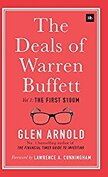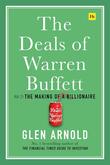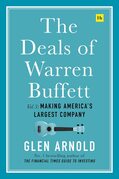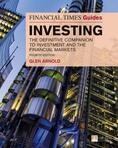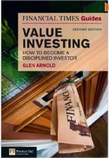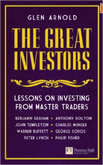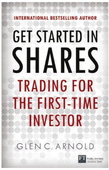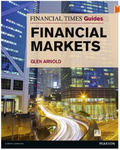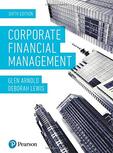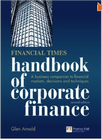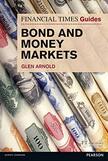|
The Deals of Warren Buffett Volume 1, The first $100m
It took the world's greatest investor, Warren Buffett, nearly four decades to make his first $100m. The Deals of Warren Buffett - Volume 1 charts the series of investments that made up that journey. In this formative period, from 1941-78, Buffett developed and honed the investment philosophy that would lead him to become so successful as his career progressed. But it was not all plain sailing - Buffett made mistakes along the way - and I show how Buffett learned through success and failure how to select companies worth backing. I also include insightful 'learning points' at the end of each chapter, which reveal how investors can learn from the craft of Warren Buffett to improve their own investing. Investments featured in this first volume include: GEICO, American Express, Disney, Berkshire Hathaway, See's Candies, and The Washington Post. With stories and analysis drawn from decades of investing experience, join me and delve deeper in The Deals of Warren Buffett! |
|
The Deals of Warren Buffett Volume 2, The making of a billionaire
In this second volume of The Deals of Warren Buffett, the story continues as we trace Warren Buffett's journey to his first $1bn. It took only 14 years for him to go from being worth $100m to being a billionaire This is the most exhilarating period of Buffett's career, where he found gem after gem in both the stock market and among tightly-run family firms with excellent economic franchises. In this period, Berkshire Hathaway shares jumped 29-fold from $89 to $2,600, while Buffett made investments in the following companies: GEICO, Buffalo Evening News, Nebraska Furniture Mart, Capital Cities, ABC, Disney, Fechheimer Brothers, Scott Fetzer, Solomon Brothers, Coca-Cola, Borsheims, Gillette, Procter & Gamble, and Duracell. For each of these deals, I delved into unprecedented detail to analyse the investment process and the stories of the individuals involved. The Deals of Warren Buffett Volume 3: Making America’s largest company In this third volume of The Deals of Warren Buffett, we trace Warren Buffett's journey as he made Berkshire Hathaway the largest company in America. When we left Buffett at the end of Volume 2, he had reached a fortune of $1bn. In this enthralling next instalment, we follow Buffett's investment deals over the decade from 1989 to 1998, as Berkshire shares jumped 14-fold from 4,700 to 68,000 and its market cap grew from $5bn to $100bn. |
|
The Financial Times Guide to Investing, fourth edition is the definitive introduction to the art of successful stock market investing. It is the number 1 investment book in the UK. Beginning with the very basics of why companies need investors and explaining what investors do, it takes you through the practicalities of buying and selling shares.
The book describes different types of investment vehicles and advises you how you can be successful at picking companies, understanding their accounts, managing a sophisticated portfolio, measuring performance and risk and setting up an investment club. |
|
The Financial Times Guide to Banking is a comprehensive introduction to how banks and banking works. The book provides you a foundation for understanding the wide variety of activities undertaken by banks. It shows you why these global institutions are so important to consumers and finance professionals alike and explains how their activities impact on everyday life.
The Financial Times Guide to Banking will give you: - A thorough understanding of all types of banking from retail through to investment banking. - An overview of global banking including the worldwide evolution of the sector. - Expert knowledge about instruments and markets - Insight into the crucial importance of central banking and government regulation |
|
The Financial Times Guide to Value Investing
What are the key principles that have served great investors for over half a century? Is there anything that we can learn from those investors who have displayed an enviable performance on the world’s stock markets? This groundbreaking book provides a set of guidelines which join value principles and growth attributes with the philosophies of the world's most famous investors. Originally published as Valuegrowth Investing, The Financial Times Guide to Value Investing: · Describes the proven investing philosophies of iconic investors including Warren Buffett, Peter Lynch and Benjamin Graham · Shows what ordinary investors should focus on when looking to invest · Provides tools for analysing key investment factors · Delivers a coherent investment strategy today for growth tomorrow · Proves that great investing requires great principles |
|
The Great Investors
Leading investors such as Warren Buffett, Benjamin Graham, Sir John Templeton and George Soros are known throughout the world. How did these people come to be so successful? Which strategies have they used to make their fortunes? And what can you learn from their techniques? In The Great Investors I succinctly describe the investment philosophies of the world’s greatest investors. Why they are the best, details of their tactics for accumulating wealth, key elements that led to their market-beating successes and key lessons that you can apply to your own investing strategies. |
|
Get Started in Shares
Buying and selling shares can be fun and profitable for everyone. Get Started in Shares will show you how to apply some of the basic principles of buying and selling shares. This is a simple, straightforward guide to the mysteries of investing that assumes no prior knowledge and will build up your understanding of investing in a series of easy steps. |
|
The Financial Times Guide to Financial Markets is a jargon-busting book that describes how financial markets work, where they are located and how they impact on everyday life. It assumes no specialised prior knowledge of finance theory and provides an authoritative and comprehensive run-down of the workings of the modern financial system.
Using real world examples from media such as the Financial Times, the book gives an international perspective on the financial markets with frequent comparisons in the workings of major financial centres such as the Bank of England and the City, and the Federal Reserve System. |
|
Corporate Financial Management
This book offers a comprehensive survey of the theory and practice of corporate finance for anyone studying the topic by itself or within business, accounting, finance, banking or economics courses, teaching you how to make informed, successful financial decisions that are crucial for a career in business. It explores topics such as investment appraisal, risk and return, sources of finance, and risk management, including derivatives, and gives a unique treatment of corporate value. |
|
Modern Financial Markets and Institutions provides a comprehensive and authoritative introduction to the workings of modern financial systems, the efficiency of money markets and the role of investment bankers, illustrating how they impact our everyday lives.
By drawing on numerous real-world examples, this text is essential reading for students of banking, finance, investment, business studies and economics. It will be invaluable for those looking to entering banking, insurance, fund management and other financial services industries. |
|
The Financial Times Handbook of Corporate Finance is the authoritative introduction to the principles and practices of corporate finance and the financial markets. Whether you are an experienced manager or finance officer, or you’re new to financial decision making, this handbook identifies all those things that you really need to know
|
|
Essentials of Corporate Financial Management supports courses designed to cover the core topics of finance in 15 to 30 hours of lectures. The book is suitable for undergraduate students studying finance as part of a business related degree, MBA students, and others studying finance at business schools. It also provides the foundation elements needed by students going on to study more advanced finance.
The step-by-step learning approach enables students to achieve a high level of financial knowledge without assuming a prior knowledge of finance. Selected core topics and key concepts are delivered with depth, allowing students to gain an understanding of the topical debates within this field, where disagreement or alternative perspectives lead to lively discussion. |
|
The Financial Times Guide to Bond and Money Markets
This jargon-busting book describes how the bond and money markets work and how they impact on everyday life. It assumes no specialised prior knowledge of finance theory and provides an authoritative and comprehensive run-down of the workings of the modern financial system. It’s in the money markets where money, or the value of money, can be bought and sold. It’s the place where Treasury bills, deposits, repurchase agreements, short-lived mortgages etc, can be traded. These are crucial to the global economy because they provide liquidity funding for the global financial system. Bond markets operate in the same way but are financial markets where participants can issue new debt or buy and sell existing debt – known as bonds. Using real world examples from media such as the Financial Times, I give an international perspective on these markets.
|
